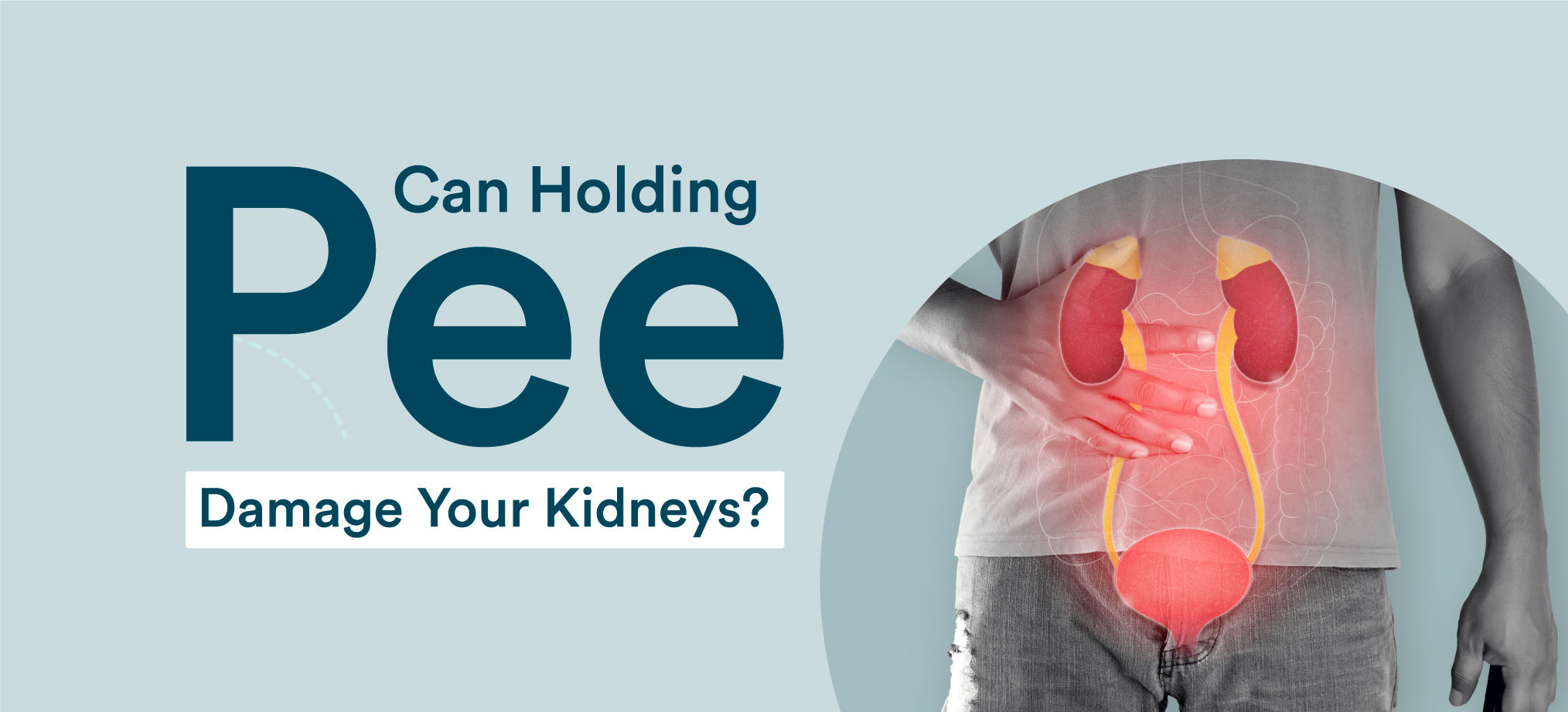General Health
Pyrexia: Definition, Types, Causes, Symptoms, Diagnosis & Treatment
8 min read
By Apollo 24|7, Published on - 10 October 2023, Updated on - 07 August 2024
Share this article
0
0 like

Body temperature regulation is an essential function of our body. It helps maintain optimal metabolic processes and supports the immune system in fighting off infections. When our body detects an invader, such as a virus or bacteria, it triggers a series of events that raise the body temperature as a defence mechanism. This increased temperature makes it harder for pathogens to survive and multiply.
Pyrexia, commonly known as fever, can be caused by various factors, such as viral and bacterial infections, inflammatory disorders, autoimmune diseases, and even certain medications. Let's discuss the different types of pyrexia, focusing on pyrexia fever and its causes, symptoms, diagnosis, and treatment options.

What is Pyrexia?
Pyrexia, is a condition characterised by an elevated body temperature above the normal range (usually between 97 degrees F and 99 degrees F). It is a natural response of the body to various illnesses and infections. Understanding pyrexia is crucial as it helps us identify and treat underlying conditions effectively.
Types And Causes of Pyrexia
Typically, pyrexia is of 2 types; infectious and non-infectious. Let's know more about them.
1. Infectious Pyrexia
High body temperature due to an underlying infection is called infectious pyrexia. Infections that may result in pyrexia include:
A. Bacterial Infections
Bacterial infections are a common cause of pyrexia or fever. These infections occur when harmful bacteria invade the body and trigger an immune response, leading to an increase in body temperature.
Important facts:
- Bacterial infections can range from mild to severe and affect various parts of the body, such as the respiratory system, urinary tract, skin, and gastrointestinal tract.
- These infections can be caused by different bacteria, such as Streptococcus pneumoniae, Escherichia coli (E.coli), Staphylococcus aureus, and Salmonella.
- In India, certain bacterial infections are more prevalent due to various factors such as hygiene practices, population density, and climate. These include tuberculosis, typhoid fever, dengue fever, cholera, and pneumonia.
- Symptoms of bacterial infections may include pyrexia fever, chills, fatigue, cough, abdominal pain, and diarrhoea.
- Treatment options for bacterial infections often include antibiotics based on the specific bacteria causing the infection. It is crucial to complete the full course of antibiotics to ensure complete eradication of the bacteria.
B. Viral Infections
Viral infections are one of the common causes of pyrexia or fever. These infections occur when viruses invade the body and multiply, leading to various symptoms, including elevated body temperature.
Important facts:
- Viral pyrexia can be caused by different types of viruses, such as influenza, dengue, chikungunya, and viral hepatitis.
- These viruses are typically transmitted through respiratory droplets, mosquitoes, or contaminated food and water. Each viral infection may have specific characteristics, modes of transmission, and target organs.
- In India, common viral infections leading to pyrexia include dengue fever, chikungunya fever, influenza (flu), and viral hepatitis. These infections can spread rapidly, especially during certain seasons or outbreaks.
- Symptoms of viral infections causing pyrexia may vary but often include high pyrexia fever, body aches, fatigue, headache, cough, sore throat, and gastrointestinal symptoms.
- Treatment for viral infections focuses on relieving symptoms and managing complications. This may involve rest, hydration, antipyretic medications, and antiviral drugs depending on the virus.
C. Fungal and Parasitic Infections
Fungal and parasitic infections are another common cause of pyrexia or fever. These infections can be caused by various fungi and parasites that enter the body and trigger an immune response, leading to an increase in body temperature.
Important facts:
- In India, fungal infections like ringworm, athlete's foot, and fungal nail infections are prevalent.
- Parasitic infections such as malaria, dengue fever, typhoid, and amoebiasis are also quite common in India.
- Symptoms of fungal infections can vary depending on the affected area but may include itching, redness, rashes, or respiratory symptoms. On the contrary, parasitic infections may present with symptoms like high fever, body aches, fatigue, diarrhoea, or vomiting.
- Treatment options for fungal infections include antifungal medications or creams. Parasitic infections are usually treated with specific antiparasitic drugs.
2. Non-Infectious Pyrexia
High body temperature without an underlying infection is called non-infectious pyrexia. Infections that may result in pyrexia include:
A. Autoimmune Disorders
Autoimmune disorders occur when the immune system mistakenly attacks healthy cells in the body, leading to inflammation and fever.
Important facts:
- In India, autoimmune conditions like rheumatoid arthritis, systemic lupus erythematosus (SLE), and vasculitis can result in pyrexia.
- These disorders can present with symptoms such as joint pain, fatigue, skin rashes, and elevated body temperature. However, the symptoms vary depending on the specific disorder.
- The treatment of autoimmune disorders aims at managing symptoms, reducing inflammation, and suppressing the immune system. This can include medications such as nonsteroidal anti-inflammatory drugs (NSAIDs), corticosteroids, immunosuppressants, and disease-modifying antirheumatic drugs (DMARDs).
B. Drug-induced Pyrexia
Several medications have been associated with drug-induced pyrexia. medications that may induce pyrexia include:
- Antibiotics such as penicillin and sulfa drugs
- Nonsteroidal anti-inflammatory drugs (NSAIDs) like ibuprofen and naproxen
- Anticonvulsants and psychiatric drugs
Symptoms of Pyrexia
Let us explore some common symptoms associated with pyrexia.
1. Elevated body temperature
One of the primary signs of pyrexia is an increase in body temperature above 98.6°F (37°C). This temperature rise is usually the body's defence mechanism against infections and illnesses.
2. Sweating
During a fever, the body may experience excessive sweating as it tries to cool down. Sweating helps regulate body temperature and can be a sign that the fever is breaking.
3. Chills and shivering
Many individuals with pyrexia experience chills and shivering as their body attempts to generate heat and raise the core temperature.
4. Headache
Pyrexia can often be accompanied by a headache, which may range from mild to severe. Headaches are a common symptom resulting from the immune response to infection.
5. Muscle aches and pains
It is not uncommon to experience muscle aches and pains during a fever. These discomforts can occur throughout the body and may be caused by inflammation or the release of certain chemicals.
Diagnosis of Pyrexia
Methods used to diagnose fever or pyrexia include:
1. Physical examination
During the physical examination, your doctor will carefully assess your symptoms to identify any visible signs of infection or inflammation. They will also review your medical history to understand any pre-existing conditions that may contribute to the fever.
2. Laboratory tests
Laboratory tests play a vital role in identifying the underlying cause of pyrexia. Fever blood tests are commonly performed to check for infection markers such as white blood cell count and C-reactive protein levels. Additionally, specific tests may be carried out to detect viral or bacterial infections, depending on the suspected cause.
3. Imaging tests
Imaging tests, such as X-rays or CT scans, may be recommended to visualise internal structures and identify any abnormalities that could be causing the fever.
Treatment of Pyrexia
When it comes to treating pyrexia, the focus is to reduce the fever and alleviate any associated pain or discomfort. The treatment includes:
- OTC medications: Over-the-counter non-steroidal anti-inflammatory drugs (NSAIDs) such as ibuprofen and acetaminophen can be used to reduce fever and relieve pain in adults. These medications work by reducing inflammation and inhibiting the production of prostaglandins, which are responsible for causing fever and pain. Parents should consult a paediatrician before administering any medication to their child.
- Antibiotics: If your pyrexia is caused by a bacterial infection, your doctor may prescribe antibiotics. These medications are effective in eradicating or inhibiting the growth of bacteria, helping to eliminate the infection and reduce fever.
- Antifungal or antiparasitic medications: Doctors may prescribe specific antifungal or antiparasitic medications to eliminate the growth and development of the microbes responsible for pyrexia.
- Immunosuppressive therapies: Immunosuppressive therapies may be prescribed to suppress an overactive immune system and reduce inflammation.
Home Remedies for Pyrexia
Maintaining a healthy diet is crucial when recovering from pyrexia. Include foods that can boost your immune system and provide essential nutrients. These include:
- Warm soups: Vegetable or lentil soups are easy to digest and provide hydration.
- Turmeric milk: Known for its anti-inflammatory properties, adding turmeric to warm milk can help reduce fever and boost immunity.
- Ginger tea: Ginger has antimicrobial properties and can provide relief from symptoms like sore throat and congestion.
- Water: Drink plenty of water throughout the day to prevent dehydration.
- Herbal teas: Chamomile or peppermint tea can soothe symptoms like headache and nausea.
- Coconut water: It is a natural electrolyte replenisher and helps in preventing dehydration.
Apart from diet, rest and relaxation techniques that can aid in recovery include:
- Deep breathing exercises: Slow, deep breaths can help relax the body and reduce stress.
- Meditation or yoga: These practices can promote mental well-being and aid in faster recovery.
- Adequate sleep: Ensure you get at least 7-8 hours of sleep to help your body recover.
Prevention of Pyrexia
Measures that may prevent pyrexia include:
- Regular handwashing: Wash your hands with soap and water for at least 20 seconds, especially before eating, after using the restroom, and after being in public places.
- Covering mouth and nose: Use a tissue or your elbow to cover your mouth and nose while coughing or sneezing to prevent the spread of respiratory infections.
- Avoid close contact: Stay away from individuals who are sick, especially if they have a high fever.
- Influenza vaccine: Annual influenza vaccination or flu shot is recommended, especially for individuals at high risk or those with chronic medical conditions.
- Pneumococcal vaccine: Pneumococcal vaccine protects against bacterial pneumonia and is recommended for the elderly, young children, and individuals with certain chronic conditions.
- Hepatitis B vaccine: It is recommended to get hepatitis B vaccine for all infants at birth and also for adults who are at high risk of hepatitis B infection.
Conclusion
Pyrexia, commonly known as fever, is a natural response by the body to fight off infections and other illnesses. It can be caused by various factors such as bacterial or viral infections, autoimmune diseases, or even certain medications. Treatment for pyrexia varies depending on the underlying cause. It may include medications to reduce pyrexia fever and manage symptoms, rest and hydration, or specific antiviral or antibiotic treatments. For more information, consult a specialist.
General Health
Frequently Asked Questions
What are the different types of pyrexia?
What are the different types of pyrexia?
What are the treatment options for viral pyrexia?
What are the treatment options for viral pyrexia?
How is viral pyrexia diagnosed?
How is viral pyrexia diagnosed?
What are the symptoms of viral pyrexia?
What are the symptoms of viral pyrexia?
Leave Comment
Recommended for you

General Health
5 Home Remedies for UTI
The most common way to treat urinary tract infections (UTIs) is by consuming antibiotics. However, should a person consume these drugs without considering other measures? In simple words, not really. One can try proven home remedies to get quick relief from UTI. This blog explains some practical steps to follow after an unwanted UTI episode.

General Health
How to Keep Ears Healthy and Prevent Infections
The common signs of ear infections include pain, itching and heaviness in the ear, hearing impairment along with dizziness, loss of appetite, and vertigo.

General Health
Why You Should Never Hold Your Pee?
Even if we desire to keep working or have just woken up from a nap, it's easy to fall into a state of extreme lethargy. But there are a few good reasons why we shouldn't hold it in.
Subscribe
Sign up for our free Health Library Daily Newsletter
Get doctor-approved health tips, news, and more.
Visual Stories

Could There Be More to Your Snore?
Tap to continue exploring
Recommended for you

General Health
5 Home Remedies for UTI
The most common way to treat urinary tract infections (UTIs) is by consuming antibiotics. However, should a person consume these drugs without considering other measures? In simple words, not really. One can try proven home remedies to get quick relief from UTI. This blog explains some practical steps to follow after an unwanted UTI episode.

General Health
How to Keep Ears Healthy and Prevent Infections
The common signs of ear infections include pain, itching and heaviness in the ear, hearing impairment along with dizziness, loss of appetite, and vertigo.

General Health
Why You Should Never Hold Your Pee?
Even if we desire to keep working or have just woken up from a nap, it's easy to fall into a state of extreme lethargy. But there are a few good reasons why we shouldn't hold it in.